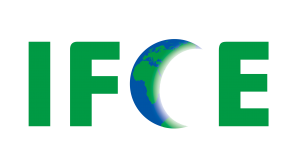International Dialogue on Wildlife Trade: China and the World
发布日期:2020-07-26
John E. Scanlon AO

Special Envoy, African Parks,Special Adviser, Elephant Protection Initiative, Chair, Global Initiative to End Wildlife Crime,Immediate past Secretary-General, CITES (2010-2018)
Sincere thanks to the Secretary-General Jinfeng Zhou for convening this International Dialogue and to our good colleagues at the China Biodiversity Conservation and Green Development Foundation (CBCGDF), and other colleagues, for facilitating this virtual gathering. Apologies for my appearance and my voice but it’s getting close to midnight here in Sydney!
The COVID-19 pandemic has reminded us in a devastating way of the interconnected nature of things, most particularly between economies, the environment, human and wildlife health and welfare. However, our international laws, programmes and funds do not yet reflect this reality, which is also largely the case at the national level.
The most likely explanation for COVID-19 is that the virus jumped from bats to humans, perhaps via another animal such as a pangolin, at a wet market in Wuhan. While no firm conclusions can yet be drawn regarding this pandemic, the links between wildlife and previous epidemics and pandemics are well-known, as are the conditions that make spillover from animals to humans more likely.
The risks are real, and the stakes are high. Risks to public health through wildlife-related zoonotic diseases can come from unregulated, regulated, and illegal wildlife trade. We need to draw on relevant experts to identify the wildlife markets, trade and consumption that poses a health risk, so we can focus our efforts where they are needed most and avoid any unintended consequences.
The current international regime for regulating wildlife trade and combating wildlife crime is inadequate both for regulating the wildlife trade, markets and consumption that pose a risk to public health, as well as for ending wildlife crime.
Left as it is our system is not going to prevent the next pandemic. It could, in fact, be raising our potential exposure to zoonotic diseases that can spill over from wild animals to people.
These are challenging, global, interconnected, issues. Profound changes are needed, and it will require a collective effort to adequately address them. Some people ask me, is this going to be possible in the current circumstances. My answer is always yes, if we maintain our focus on our common challenges and how we can work together to resolve them.
In saying so, I draw inspiration from previous occasions when the international community has come together to address global challenges, such as agreeing on new conventions in the 1970’s on migratory species, trade in endangered species, wetlands and world heritage, in the 1990s on biodiversity, climate change and desertification, and in the early 2000’s on combatting corruption and transnational organised crime.
More recently, when I joined the CITES secretariat in 2010, we were confronting a surge in illegal wildlife trade, especially as it affected the African elephant for its ivory. The only way we were going to stop it was by working together across source, transit, and destination States and it was my great pleasure to work with States right across the illegal supply chain to achieve this objective, including with the Chinese authorities.
China destroyed confiscated ivory in Dongguan in 2014, held a workshop on demand-side strategies in Hangzhou 2015, closed its first ivory markets in Beijing in 2017 and enhanced its overall enforcement effort.
While we still have work to do, we collectively turned around the surge in elephant poaching and ivory smuggling and it shows what is possible when we work together to solve a common challenge. We can do it again.
Wildlife trade
As regards wildlife trade, CITES is the global legal instrument that regulates international trade. Its decisions are based upon agreed trade and biological criteria. It does not include risks to public health, or animal health, in its decision making, including in listing a species or in approving any trade transactions. For example, pangolins are listed under CITES, horseshoe bats, along with many other bat species, are not.
CITES trade controls only address overexploitation, namely whether a trade transaction will threaten the survival of that species. CITES narrow focus on overexploitation was sound when the Convention was negotiated in the early 1970’s, but it cannot be sustained in a post COVID-19 world. Today we need to take a ‘One Health’ approach to wildlife trade.
At the present time, some States, including China, are taking stricter domestic measures to ban certain wildlife trade, markets and consumption, as a precautionary measure, which is to be welcomed. However, to be effective, such measures will need to be applied and enforced across all countries to stave off future pandemics.
To achieve this objective, we need to work together within an open, transparent, science-based international legal framework that includes health criteria in its decision-making process. This does not exist today, either under CITES or anywhere else.
As I see it, there are three options at international level to build public and animal health into wildlife trade laws. We can:
- amend CITES;
- create a new Protocol under the Convention on Biological Diversity; or
- create a new Agreement under the World Health Organisation.


